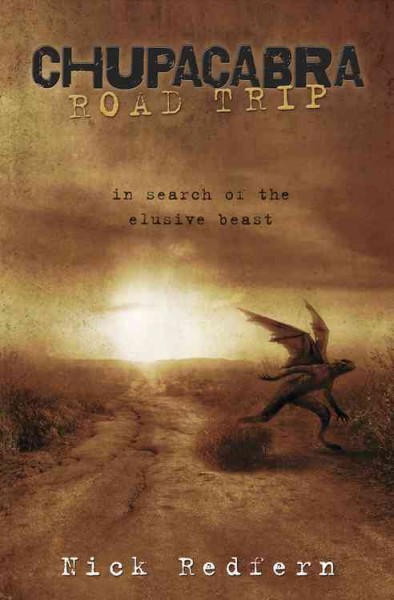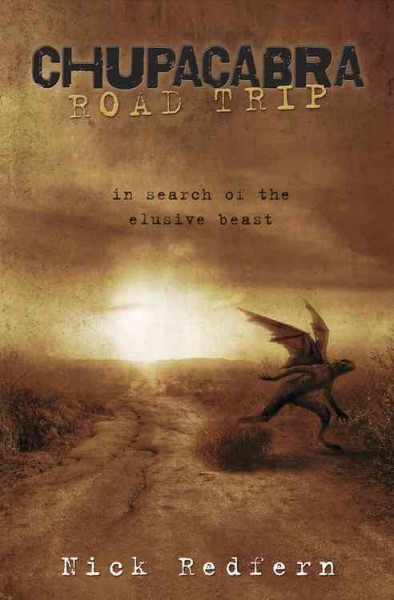Take a journey into the fascinating world of the mysterious Chupacabra through a collection of captivating pictures that reveal its elusive nature. Uncover the truth behind this legendary creature as you explore its sightings, examining the evidence in these intriguing photographs. Brace yourself for a visual adventure as you embark on a quest to solve the enigma that is the Chupacabra. Get ready to unlock secrets and discover the truth behind this mythical creature in an unprecedented way.
The Chupacabra Legend
The legend of the Chupacabra has roots in various Latin American countries, particularly Puerto Rico. The name “Chupacabra” translates to “goat-sucker” in Spanish, referencing the creature’s supposed preference for attacking livestock, especially goats. While the origins of the legend are murky, it gained significant popularity in the 1990s when reports of mysterious animal attacks surfaced. Since then, the Chupacabra has become a fascinating subject of fascination and intrigue for cryptozoologists, researchers, and enthusiasts alike.
Origins of the Legend
The exact origins of the Chupacabra legend are difficult to pinpoint, as it is deeply rooted in folklore and urban legends. However, the first reported incidents of Chupacabra attacks began appearing in Puerto Rico in the mid-1990s. Local residents started attributing the gruesome livestock mutilations to an unknown creature, thus fueling the legend. Over time, the legend spread across the Americas, captivating the imaginations of people far and wide.
Description of the Chupacabra
The Chupacabra is described as a bipedal creature with reptilian or alien-like features, standing about 3 to 4 feet tall. It is often depicted as having sharp spines along its back and large, red or glowing eyes. Witnesses claim to have seen it hopping like a kangaroo and displaying extraordinary agility. Its most distinct characteristic, however, is its supposed feeding habits – the Chupacabra is said to drain the blood from its prey, primarily targeting livestock such as goats and chickens.
Sightings and Beliefs
Numerous sightings of the Chupacabra have been reported over the years, creating a dichotomy of beliefs among people. While skeptics dismiss these accounts as nothing more than hoaxes or misidentifications, believers maintain that there is more to the Chupacabra than meets the eye. These encounters vary in detail and location, further adding to the mystique surrounding the creature. From rural farmlands to suburban neighborhoods, tales of the Chupacabra persist, captivating the minds and curiosity of those intrigued by the unknown.

This image is property of Amazon.com.
Chupacabra Sightings
The legend of the Chupacabra is perpetuated by several famous sightings that have captured the public’s attention. One notable case involves the small town of Canóvanas in Puerto Rico in 1995, where numerous animals were found with inexplicable puncture wounds and drained of their blood. This wave of mysterious attacks led to widespread panic and speculation, propelling the Chupacabra into the realm of mass consciousness.
Eyewitness Accounts
Eyewitness accounts play a crucial role in validating the Chupacabra legend. People from different walks of life have come forward with their stories, claiming to have encountered the enigmatic creature. Witnesses detail chilling encounters, describing the creature’s appearance and behavior with a remarkable level of consistency. These accounts provide a glimpse into the terror and intrigue surrounding the mystery of the Chupacabra.
Photographic Evidence
Photographs purportedly showing the Chupacabra have fueled public fascination and debate. While photographic evidence may seem compelling, analyzing such pictures is essential to determine their authenticity and rule out any potential hoaxes. The quest for definitive proof through photographs requires careful examination, considering factors like lighting, focus, and image quality.
The Importance of Pictures
Pictures play a significant role in documenting and corroborating sightings of elusive creatures like the Chupacabra. They provide a tangible form of evidence that can be analyzed and studied by experts. Photographs often serve as a visual record, allowing researchers to compare and evaluate the creature’s physical characteristics. Without photographic evidence, the Chupacabra would remain shrouded in ambiguity, leaving the legend open to skepticism and speculation.

This image is property of Amazon.com.
Determining Authenticity
Authenticating Chupacabra photographs is an essential part of the investigative process. Experts employ various techniques and criteria to evaluate the veracity of the images. Factors such as image quality, consistency with eyewitness accounts, and potential signs of tampering are meticulously examined. Critical analysis and scientific scrutiny are necessary to separate genuine evidence from cleverly crafted hoaxes.
Common Hoax Signs
Hoaxers have been known to create elaborate Chupacabra schemes to deceive the public and achieve their own notoriety. Some telltale signs of a hoax include overexposure or blurriness in the photograph, excessively dramatic poses by the alleged Chupacabra, and inconsistencies in lighting and shadows. It is essential for researchers and enthusiasts to remain vigilant and discerning, ensuring that credible evidence is distinguished from clever fabrications.
Controversial Chupacabra Photos
Certain Chupacabra photographs have acquired infamy due to their controversial nature. These images have prompted heated debates and further investigation into the authenticity of the creature. One infamous photo from 2007 depicts a creature with exaggerated spikes along its back, causing speculation about the creature’s true identity. While these disputed photographs fuel the Chupacabra legend, they also serve as reminders of the complexities and challenges involved in uncovering the truth.
Photo Analysis
Controversial Chupacabra photos require careful analysis to determine their credibility. Experts scrutinize various aspects of the images, including the creature’s physical features, anatomical inconsistencies, and potential signs of manipulation. By subjecting the photographs to rigorous examination, researchers can either debunk them as elaborate hoaxes or offer compelling evidence corroborating the existence of the Chupacabra.

This image is property of www.mpl.org.
Debunking the Myth
While some Chupacabra photographs have garnered attention, many have been successfully debunked. Critical analysis and scientific investigation have revealed alternative explanations for the alleged sightings. In some cases, misidentified animal carcasses or predators with abnormal behavior have been identified as the true culprits behind the livestock attacks attributed to the Chupacabra. Debunking these myths is essential in separating fact from fiction and ensuring that accurate information is disseminated.
Recent Chupacabra Encounters
In recent years, credible witnesses have come forward with detailed accounts of encountering the Chupacabra. Alongside their testimonies, photographic evidence has emerged that shows creatures bearing similarities to the legendary beast. These recent encounters have sparked renewed interest among scientists and researchers, prompting scientific investigations into the validity of these claims and the true nature of the Chupacabra.
Chupacabra Taxonomy
As a subject of cryptozoology, the Chupacabra’s taxonomy remains a topic of speculation and exploration. Researchers delve into various taxonomic classifications while attempting to place the Chupacabra within known animal species. Although it has not been officially recognized as a distinct species, extensive research and analyses continue to shed light on its potential origins and relation to other cryptids.
Research and Speculation
The study of the Chupacabra involves in-depth research and meticulous scientific examination. Researchers analyze various aspects, including the creature’s physiology, behavior, and possible evolutionary history. Speculation is a fundamental part of the process, as investigators explore alternative theories and explanations to unravel the mysteries surrounding the Chupacabra and its existence.

This image is property of thehappinessfxn.com.
Chupacabra-related Species
The Chupacabra’s elusive nature has sparked theories about possible related species. Some researchers propose that the Chupacabra may belong to a new or unidentified species within the animal kingdom. Others suggest that the creature is a mutated or genetically modified form of an existing species. These hypotheses, while intriguing, require further investigation and evidence to support their claims, adding another layer of fascination to the ongoing search for the true nature of the Chupacabra.
Photographing Elusive Creatures
Capturing proof of elusive creatures like the Chupacabra presents several challenges. These cryptids are often adept at evading human observation and interaction, making it difficult to obtain photographic evidence. However, advancements in camera technology and techniques offer new opportunities for capturing high-quality images that can contribute to scientific research and investigation.
Challenges in Capturing Proof
Photographing elusive creatures is no easy task. Their elusive nature, combined with the unpredictability of their appearances, presents significant challenges for researchers and photographers alike. Limited opportunities for sightings, adverse weather conditions, and the necessity for patience and persistence make the process daunting. Overcoming these challenges requires a combination of skill, perseverance, and a deep understanding of the creature’s habits and habitats.
Camera Technology Advancements
Advancements in camera technology have revolutionized the field of wildlife photography and cryptozoology. High-resolution cameras with powerful zoom capabilities enable photographers to capture detailed images from a safe distance. Night vision and thermal imaging technologies have also proved instrumental in documenting nocturnal cryptids like the Chupacabra. These technological advancements enhance the probability of obtaining credible photographic evidence, aiding researchers in their quest for answers.

This image is property of Amazon.com.
Tips for Photographing Cryptids
Photographing creatures like the Chupacabra requires a careful approach and an understanding of their behavior. Patience is key, as cryptids often operate on their own schedule and in remote areas. It is crucial to research the creature thoroughly, studying its habitat and habits. Additionally, having the necessary equipment, such as telephoto lenses and high-resolution cameras, is vital for capturing clear and compelling images. By following these tips and remaining persistent, photographers stand a better chance of documenting these elusive wonders.
The Role of Media
The media plays a significant role in shaping and perpetuating the Chupacabra legend. Coverage of Chupacabra sightings and related stories can greatly impact public perception, further fueling fascination or skepticism. However, as with any subject, it is crucial for the media to exercise ethical reporting practices and avoid sensationalism or the uncritical dissemination of hoaxes.
Media’s Impact on the Chupacabra Legend
The media’s depiction of the Chupacabra has had a profound impact on its popularity and the dissemination of information. Reports of alleged sightings and attacks make headlines, captivating the public’s attention. While this attention has helped raise awareness about the creature and facilitated scientific investigation, it has also contributed to sensationalism and the proliferation of hoaxes. Media outlets must strike a balance between informing the public and promoting responsible reporting practices.
Hoaxes and Sensationalism
The Chupacabra phenomenon has attracted its fair share of hoaxes and sensationalism over the years. Individuals seeking attention or attempting to deceive others have fabricated stories and staged elaborate sightings to perpetuate the legend. These hoaxes can cause confusion and hinder genuine research efforts. Discerning between legitimate reports and manufactured tales requires critical thinking and a comprehensive understanding of the history and characteristics of the Chupacabra phenomenon.
Ethical Reporting Practices
In reporting on the Chupacabra and other cryptid phenomena, media outlets have a responsibility to uphold ethical reporting practices. This includes careful fact-checking, unbiased analysis, and responsible discussion of evidence. Promoting critical thinking and skepticism within the audience fosters a more informed and accurate perception of the Chupacabra legend. By adhering to ethical reporting practices, the media can contribute to the ongoing quest for truth and shed light on the mysteries surrounding elusive creatures.
The Cultural Significance
The Chupacabra legend carries tremendous cultural significance, weaving its way through folklore, mythology, and popular culture. Its enduring presence in various cultures reflects humanity’s fascination with the unknown. The Chupacabra’s existence transcends geographic boundaries, generating cross-cultural interpretations that further contribute to its mystique.
Folklore and Mythology
The Chupacabra has become enshrined within the realm of folklore and mythology, captivating the imaginations of storytellers and passing down through generations. Folkloric tales of the Chupacabra serve as cautionary tales, warning of the dangers that lurk in the shadows. As folklore continues to evolve, the Chupacabra remains a prominent figure in the collective consciousness of numerous cultures.
Pop Culture References
The Chupacabra has made its way into popular culture, leaving an indelible mark on various forms of media. References to the creature can be found in literature, films, and even video games. Its portrayal ranges from terrifying antagonist to playful creations, contributing to its iconic status. By infiltrating pop culture, the Chupacabra remains firmly embedded in the minds of individuals worldwide.
Cross-cultural Interpretations
The Chupacabra’s legend has transcended borders and cultural boundaries, leading to diverse interpretations across different regions. While the core characteristics of the creature remain consistent, subtle variations emerge depending on the cultural context. These interpretations reflect the unique beliefs, fears, and folklore present within each culture, adding depth and richness to the Chupacabra’s narrative.
Unveiling the Mystery
The quest for evidence and answers drives the ongoing investigation into the Chupacabra phenomenon. Scientists and researchers, armed with technology, critical thinking, and a scientific approach, continue their quest to unveil the mystery surrounding this elusive creature.
The Scientific Approach
Scientists approach the study of the Chupacabra with the same rigor and methodology applied to other scientific endeavors. They rely on evidence-based research, critical analysis, and peer review to develop informed theories and explanations. By adhering to the scientific approach, researchers increase the likelihood of uncovering the truth about the Chupacabra.
Exploring Alternative Explanations
While the Chupacabra remains an enigmatic legend, researchers also consider alternative explanations for reported sightings and livestock attacks. Factors such as misidentifications, natural predation, or unusual animal behavior are carefully examined to determine if they could account for the Chupacabra phenomenon. By expanding the scope of investigation, researchers expand their understanding and approach the mystery from multiple angles.
In conclusion, the Chupacabra legend continues to captivate the imagination of people around the world. From its origins in Latin American folklore to the present day, the legend has evolved through eyewitness accounts, photographic evidence, and scientific investigation. The quest for truth and evidence drives researchers, photographers, and enthusiasts as they unravel the mystery surrounding the Chupacabra. As technology advances and our understanding of the natural world deepens, perhaps one day, the elusive Chupacabra will be unveiled, and the truth behind the legend will finally come to light.

